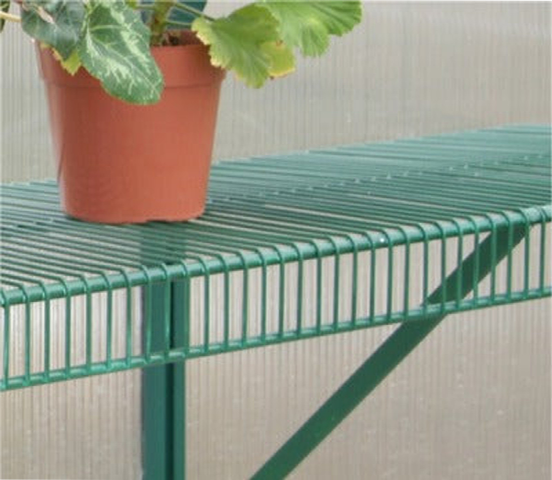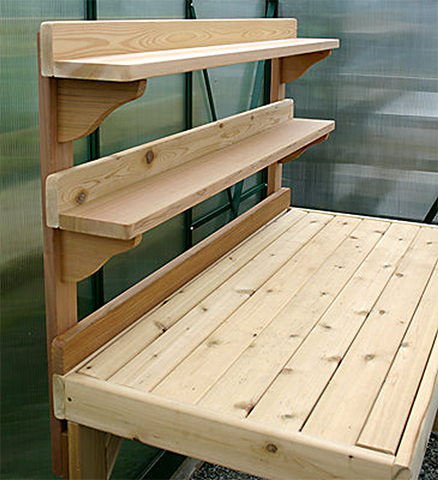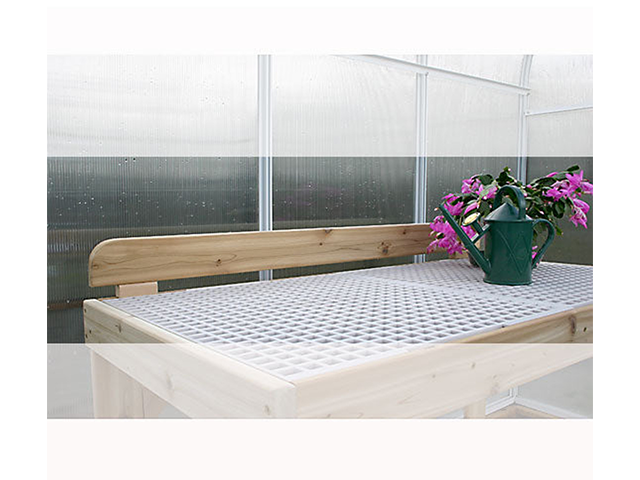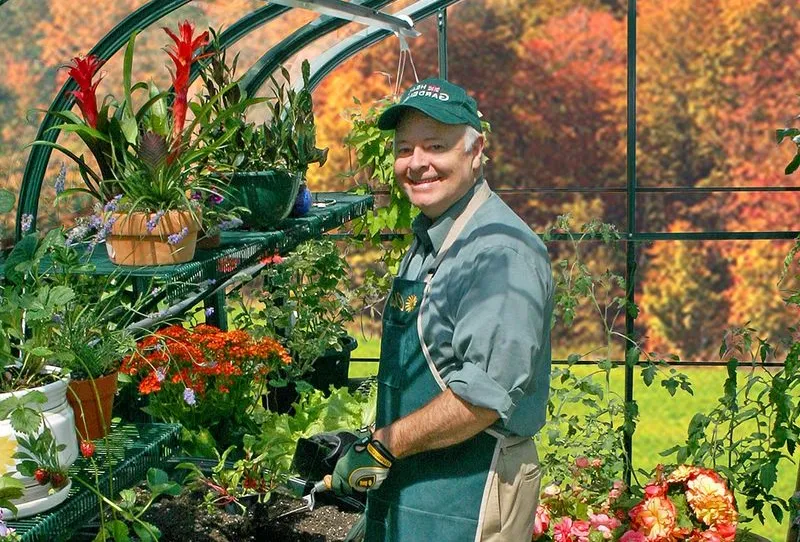Greenhouse Shelving Ideas To Optimize Space
If you’re passionate about gardening and want to make the most of the limited space in your greenhouse, effective shelving solutions can transform your green oasis. Shelving in a greenhouse not only organizes your plants and tools efficiently but also improves the functionality of your space.
Consider these greenhouse shelving ideas to create a visually attractive and functional environment, ensuring you use every square inch of your greenhouse effectively. Whether you have a small hobby greenhouse or simply wish to organize your plants better, the right shelving can boost plant growth and crop yield.
Vertical Shelving Systems
Maximize the vertical space in your greenhouse by installing tall shelving units that extend up toward the ceiling. These vertical systems increase your growing area without enlarging your greenhouse’s footprint.
Opt for durable metal racks with several tiers to suit a range of plant sizes, from small herb gardens to large tomato vines. Consider attaching a pegboard to a freestanding frame, which allows you to use modular, adjustable brackets and shelves that can be rearranged for different plant types or growth rates.
However, when positioning vertical shelves, ensure that upper levels still receive adequate sunlight penetration. Place larger vegetable plants, such as peppers or eggplants, on lower shelf tiers and trailing/climbing varieties, like cucumbers or pole beans, on higher levels. Also, leave enough room between each shelf for proper air circulation.
Hanging Shelves
Like vertical racks, hanging shelves attached to ceiling beams or greenhouse frames use valuable overhead space. This frees up limited floor space for warm-weather crops that tend to spread like melons or zucchinis and for work surfaces and walking aisles.

Suspend metal mesh or wire shelves from above for lightweight seed trays filled with lettuce seedlings, compact herb gardens, and small flowering annuals that don’t need deep soil. And, if you choose a system with slats or mesh, you can also hang potted plants on the underside using hooks or zip ties.
When planning hanging shelf layouts, account for enough head clearance to avoid collisions while working underneath. Positioning above potting benches or open floor spaces is ideal. For added flexibility, install hanging shelves on overhead tracks so you can easily slide them aside when not in use during peak seasons.
Adjustable Shelving
Adjustable shelving in a greenhouse helps your space accommodate changes in plant sizes and spatial requirements throughout the year. Shelving that allows you to move tray levels up and down can adapt to your plants’ growth cycles and the seasonal shifts in climate.
This flexibility lets you adjust the spacing of shelves to fit large plants like summer tomatoes and smaller seedlings such as broccoli and cabbage in early spring, all within the same unit.
Before investing in adjustable greenhouse shelves, plan for your seasonal needs by evaluating plant growth cycles, space requirements, and the equipment needed for each season. Also, consider the variations in temperature and sunlight exposure throughout the year.
Warm-weather crops like eggplants, green beans, and okra grow large and need more space between shelves, whereas cool-weather plants such as lettuce and greens are smaller and can be packed closely together. Using moveable shelves for easy rearrangement can accommodate these variations.
Tiered Plant Stands

Use tiered plant stands or step-style terrace shelving inside your greenhouse for seedlings, small plants like succulents, and compact crops like strawberries.
The multi-level, stair-stepped design ensures each row receives sufficient sunlight exposure without shadowing from taller plants. These vertically oriented, space-saving units fit neatly along walls or corners without occupying precious floor space.
Choose moisture-resistant materials like plastic, aluminum, or zinc-coated steel that won’t rot, rust, or absorb water, or pest-repellant wood varieties like cedar. Open wire or slatted shelves promote airflow and drainage for healthy growth. Add casters for easy mobility when resetting between crop rotations.
Rolling Benches
Any serious gardener must have at least one rolling greenhouse bench. Benches mounted on heavy-duty caster wheels allow you to easily reposition plants like tomatoes, cucumbers, and peppers as sunlight patterns shift throughout the day and across seasons from spring to fall.
Wheeled benches can also transform how you garden by effortlessly transporting plants, tools, and supplies. Arrange the bottom shelves with your potting soil, hand trowels, pruners, and other essentials so everything is mobile and ready as you nurture your plants.
When shopping for a rolling bench, look for water-resistant surfaces with a high-grip texture to prevent items from moving around. The unit should also have raised edges to prevent spills and drainage holes to manage excess water.
Corner Shelves
Don’t let those tight greenhouse corners and nooks go to waste—install space-maximizing corner shelves to make productive use of every inch of space.
These L-shaped or wedge-shaped shelf units fit snugly into spots where conventional rectangular shelving cannot, creating a perfect compact home for small herb gardens, seed trays for delicate seedlings, propagation chambers, and frequently used tools.
These nooks keep essentials organized and within easy reach while leaving open floor spaces clear for larger plant beds and containers. Look for moisture-resistant options like plastic or PVC units that can handle humid conditions year-round.
Foldable Shelving
For greenhouses with fluctuating space demands between peak and off-seasons, foldable wire shelving for a greenhouse offers exceptional versatility.
These heavy-duty steel racks can be opened to increase growing space when plants flourish, then collapse flat and stowed away as crops finish. During spring and summer, unfold the shelving units to maximize your greenhouse’s productive footprint for vegetables like tomatoes and peppers.
Come fall, simply fold down the units and store them to free up floor space for overwintering cold-hardy plants like kale and brussels sprouts and preparing for the next season. These foldable shelves are also perfect for part-time greenhouse hobbyists needing adaptable storage.
Slatted Wooden Shelves

Build your greenhouse shelving using slatted wood or cedar lattices to achieve a natural look while improving ventilation. The gaps between the slats ensure healthy air circulation and allow light to reach all levels, which is ideal for tropical plants that thrive in humid conditions. For wall-mounted designs, you can hang slatted wood shelves suspended with chains, freeing up floor space for larger crops such as melons and squash.
Construct these shelves with tops slanted toward the sun to maximize light exposure for seedlings and delicate greens. Add sections of trellising to support climbing plants like cucumbers. Wood’s insulative qualities also help maintain stable internal temperatures throughout the changing seasons.
Maximize Your Greenhouse Space with Charley’s Greenhouse and Garden
Regardless of the greenhouse shelving ideas you choose, it’s important to opt for durable, weather-resistant materials suitable for humid environments.
At Charley’s Greenhouse & Garden, we provide a variety of high-quality greenhouse shelving systems, benches, and organizational solutions designed to enhance your growing space. Explore our greenhouse shelves and racks collection to optimize your indoor garden today!


